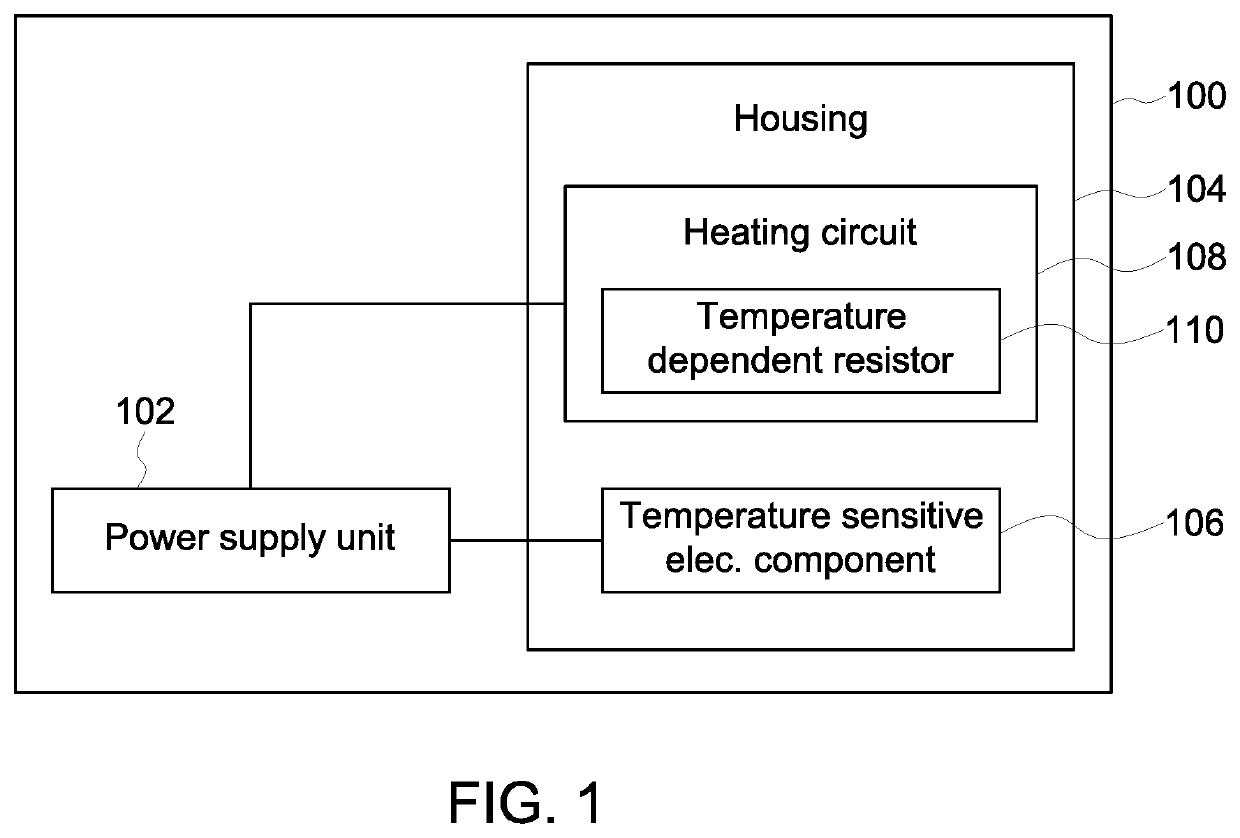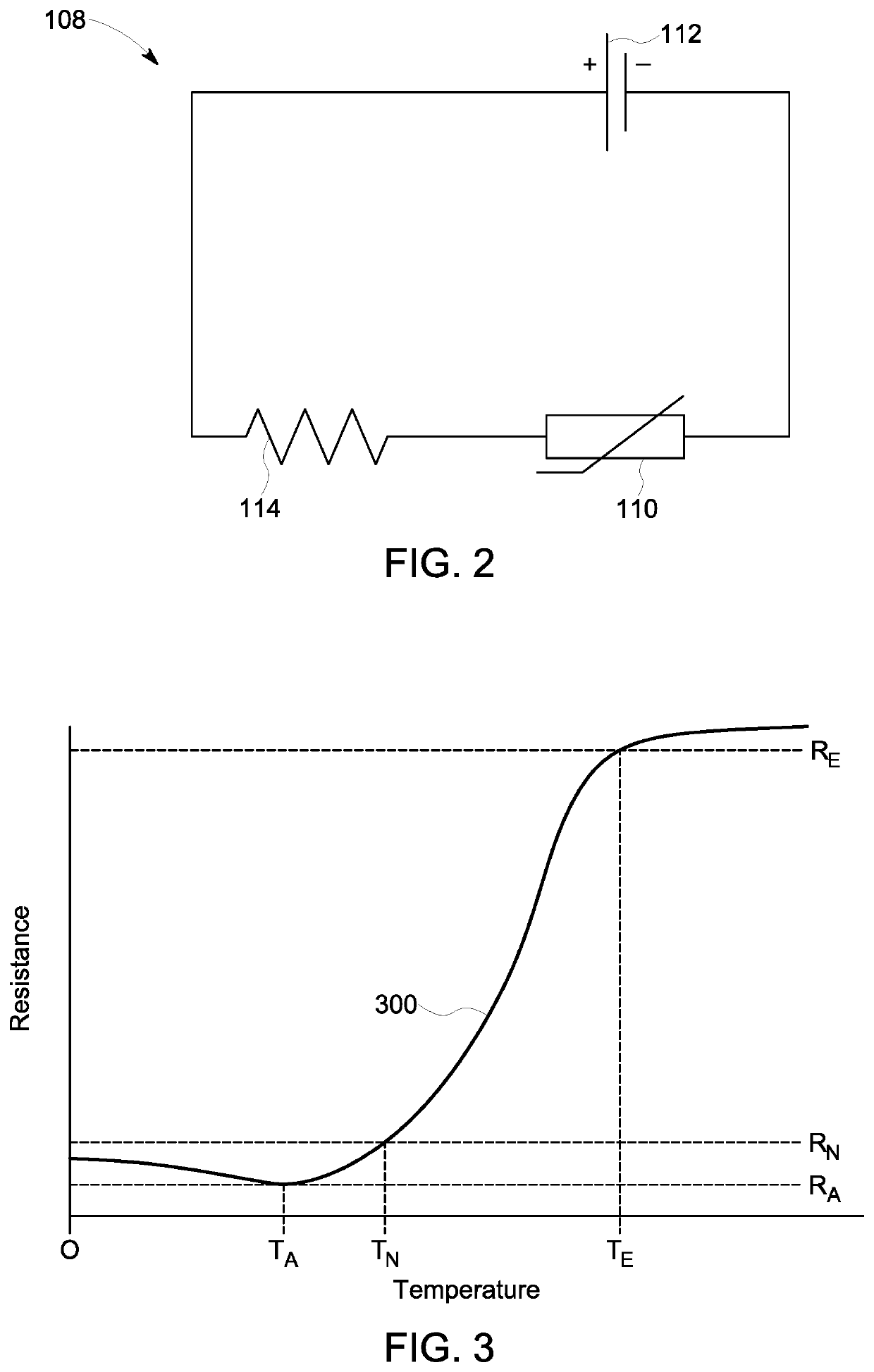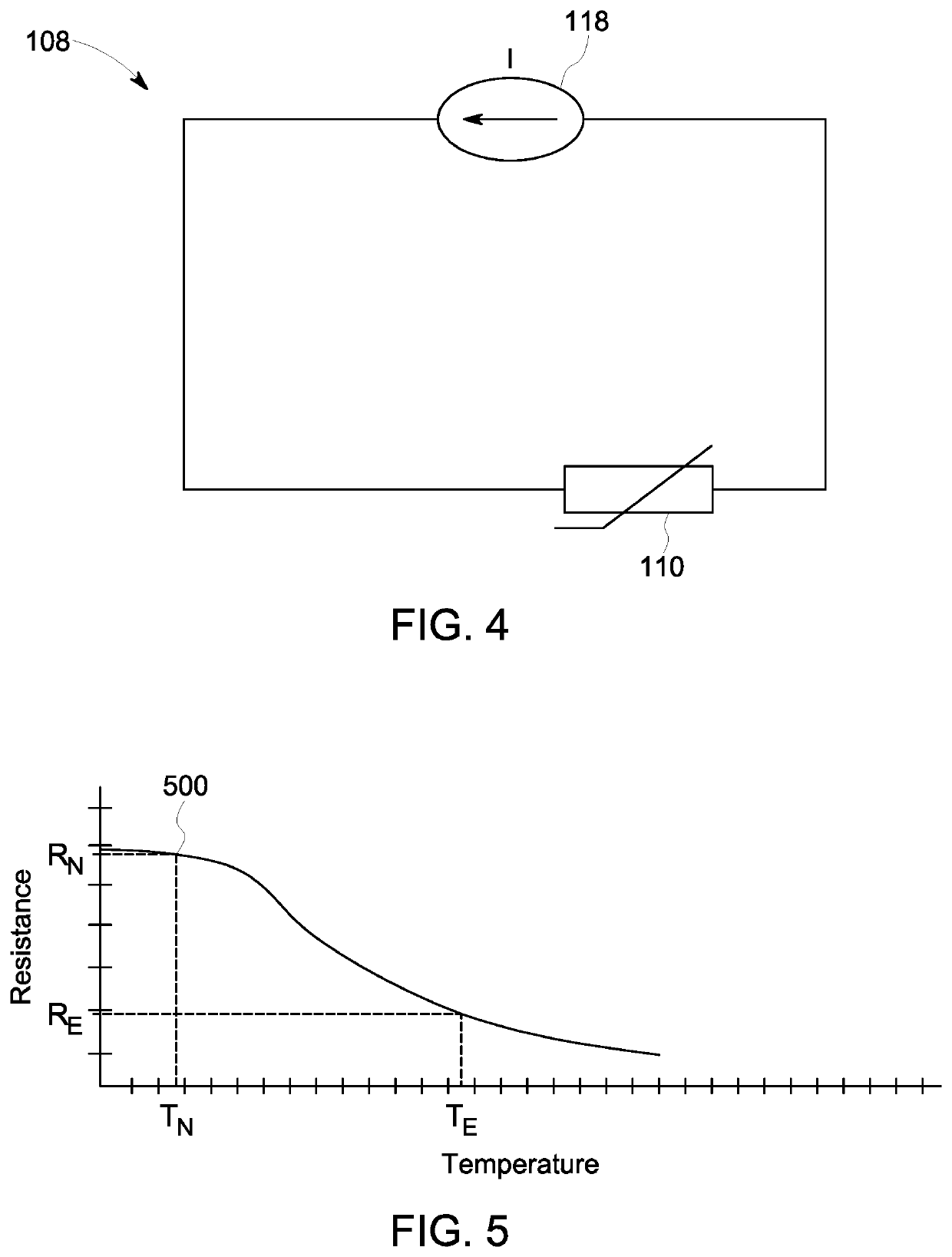Systems and methods for passive heating of temperature-sensitive electronic components
a technology of electronic components and passive heating, applied in temperatue control, process and machine control, instruments, etc., can solve the problems of at least one and the temperature-sensitive electronic component becoming susceptible to failur
- Summary
- Abstract
- Description
- Claims
- Application Information
AI Technical Summary
Benefits of technology
Problems solved by technology
Method used
Image
Examples
Embodiment Construction
[0019]In the following specification and the claims, reference will be made to a number of terms, which shall be defined to have the following meanings.
[0020]The singular forms “a”, “an”, and “the” include plural references unless the context clearly dictates otherwise.
[0021]“Optional” or “optionally” means that the subsequently described event or circumstance may or may not occur, and that the description includes instances where the event occurs and instances where it does not.
[0022]As used herein, the phrase “generate heat energy” means that generator produces at least 0.1 watts of heat energy.
[0023]As used herein, the terms “processor” and “computer,” and related terms, e.g., “processing device,”“computing device,” and “controller” are not limited to just those integrated circuits referred to in the art as a computer, but broadly refers to a microcontroller, a microcomputer, a programmable logic controller (PLC), and application specific integrated circuit, and other programmabl...
PUM
 Login to View More
Login to View More Abstract
Description
Claims
Application Information
 Login to View More
Login to View More - R&D
- Intellectual Property
- Life Sciences
- Materials
- Tech Scout
- Unparalleled Data Quality
- Higher Quality Content
- 60% Fewer Hallucinations
Browse by: Latest US Patents, China's latest patents, Technical Efficacy Thesaurus, Application Domain, Technology Topic, Popular Technical Reports.
© 2025 PatSnap. All rights reserved.Legal|Privacy policy|Modern Slavery Act Transparency Statement|Sitemap|About US| Contact US: help@patsnap.com



